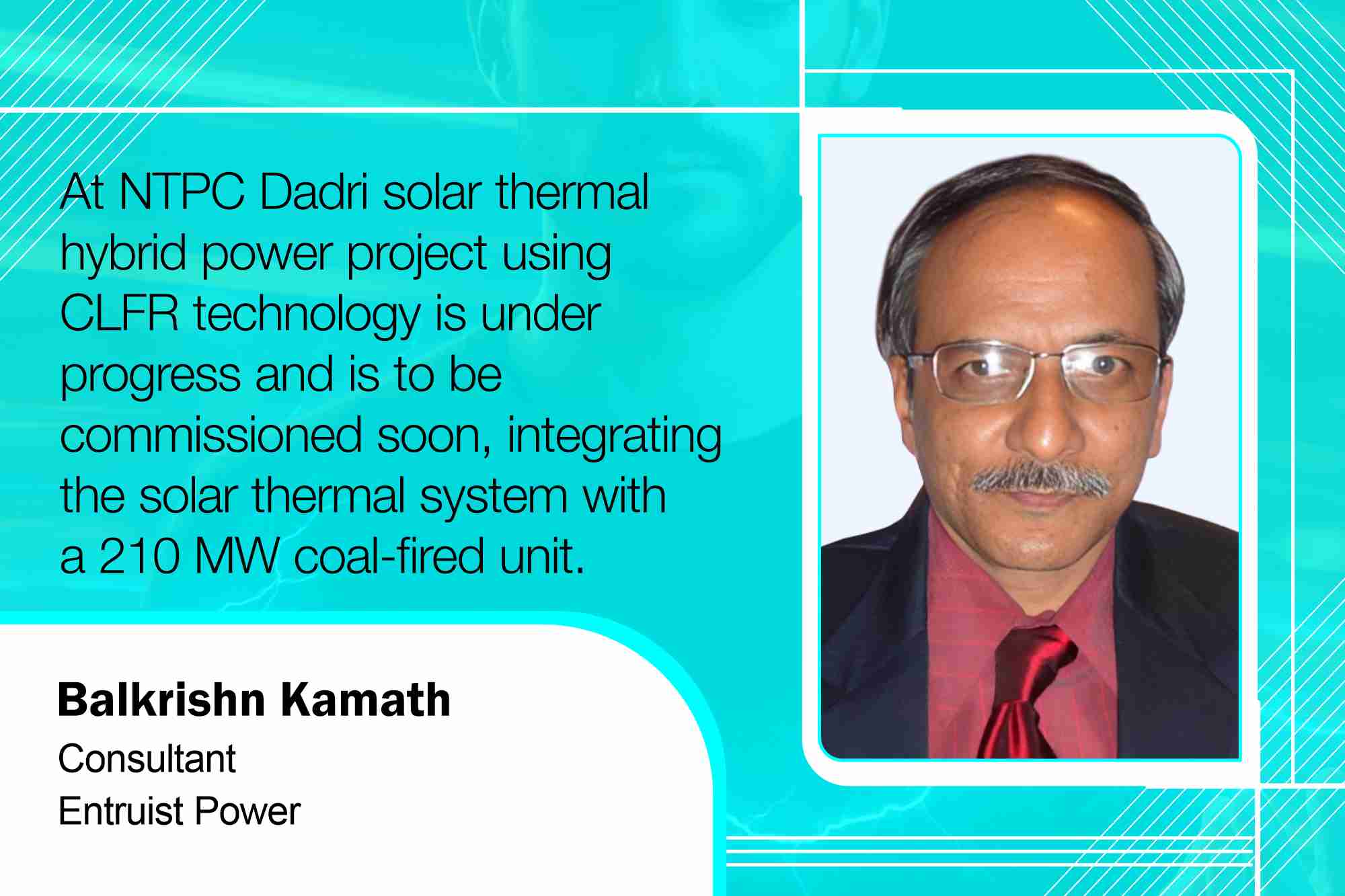Hybrid power plants necessary for sustainable, cost-effective power generation
By Staff Report May 24, 2025 3:23 pm IST
By Staff Report May 24, 2025 3:23 pm IST

Solar thermal energy captures heat from the sun using mirrors or lenses to concentrate sunlight, which heats fluid to produce steam. This steam runs turbines just as in a traditional thermal power plant.
Converging conventional and renewable sources into what we now call hybrid power plants is not just a technological evolution; it is necessary to ensure sustainable, reliable, and cost-effective electricity generation. Integrating solar thermal energy with superthermal power stations is a particularly effective approach among various hybrid models.
How Hybrid Power Plants Work
A hybrid power plant uses two or more energy sources to generate electricity, offering greater flexibility and reliability. This concept can be likened to a hybrid car combining a battery-powered electric motor with a petrol or diesel engine. The electric component ensures environmental friendliness and fuel efficiency, while the conventional engine provides backup and reliability when needed. Similarly, hybrid power plants that combine coal with solar thermal energy offer the environmental advantages of renewable energy while maintaining the dependable power supply associated with thermal plants.
Solar PV vs. Solar Thermal Technologies
It is important to distinguish between solar photovoltaic (PV) and solar thermal technologies. While solar PV is widespread and economical, it relies on inverters to convert DC power to AC, often introducing harmonics into the power system. In contrast, solar thermal energy captures heat from the sun using mirrors or lenses to concentrate sunlight, which heats a fluid to produce steam. This steam runs turbines just as in a traditional thermal power plant. Since solar thermal systems do not use inverters, they avoid the harmonic issues common with PV systems and allow smoother grid integration.
Types of Solar Thermal Technologies
Several solar thermal technologies exist, including parabolic trough collectors, compact linear Fresnel reflectors (CLFR), solar towers and solar dish systems. Parabolic troughs use curved mirrors to focus sunlight on a pipe along the focal line. This pipe carries oil or molten salt, transferring the collected heat to a water-steam circuit. Compact linear Fresnel reflectors offer a similar process but use flat mirror segments arranged in rows, making them simpler and more economical. On the other hand, solar towers use an array of heliostats (sun-tracking mirrors) that reflect sunlight onto a central receiver atop a tall tower. The temperatures achieved here can exceed 1000°C, and molten salt is typically used as the heat transfer medium due to its high thermal storage capacity. Solar dish systems focus sunlight on a single point and can achieve high thermal efficiency with two-axis tracking systems.NTPC Dadri: A Hybrid Model
At NTPC Dadri solar thermal hybrid power project using CLFR technology is under progress and is to be commissioned soon, integrating the solar thermal system with a 210 MW coal-fired unit. The heat from the solar collectors raises the temperature of the feedwater before it enters the boiler, effectively reducing the need for coal firing during sunlight hours. The turbine and generator infrastructure already present at the site continues to be used, making this a cost-efficient and environmentally beneficial augmentation rather than a greenfield development.
Advantages of Hybrid Solar-Thermal Integration
This hybrid arrangement brings several clear advantages. The existing turbine-generator and transmission infrastructure reduce the capital expenditure required for adding renewable capacity. Coal consumption is reduced during daylight hours, lowering emissions without sacrificing power generation. A larger turbine also improves operational efficiency, as larger machines perform better than smaller standalone renewable units. Furthermore, since solar thermal systems can include thermal storage using molten salt, power can continue to be generated even after sunset, addressing one of the major limitations of solar energy.
Integrating solar thermal with thermal power plants is not just a technical innovation; it represents a pragmatic approach to the ongoing energy transition in India. It combines the reliability of traditional power systems with the sustainability of renewables. As the country works toward its ambitious renewable energy targets, such hybrid systems will play a vital role in ensuring that growth does not come at the cost of reliability or affordability.
We use cookies to personalize your experience. By continuing to visit this website you agree to our Terms & Conditions, Privacy Policy and Cookie Policy.